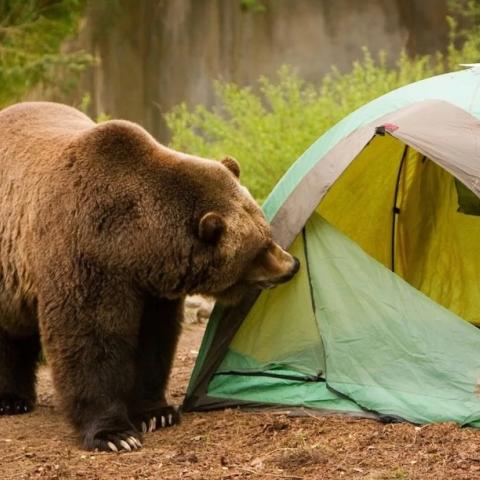
Preservation skills will be taught while rehabilitation work is completed on the historic Crandall Studio now being used as the Jenny Lake Visitor Center/Kurt Repanshek file
A public-private partnership run through the National Trust for Historic Preservation is helping to rehabilitate historic structures in Grand Teton National Park in Wyoming while also teaching young people preservation skills.
The Trust's HOPE Crew -- Hands-On Preservation Experience -- is focused on a weeks-long project to help rehabilitate the Jenny Lake Historic District at Grand Teton. In partnership with the National Park Service’s Western Center for Historic Preservation and the Rocky Mountain Youth Corps, HOPE Crew is teaching a team of young participants about preservation philosophy, building crafts, building technology, and project management skills, as they save the park’s historic Crandall Studio—photographer Harrison Crandall’s cabin, which served as dancehall, studio, general store, and today as the Jenny Lake Visitor Center.
“HOPE Crew’s success with a diverse set of projects across national parks—from log cabins and adobe ruins to forts and mid-century modern masterpieces—highlights a hands-on solution to saving places that goes beyond addressing deferred maintenance to make a positive difference in the lives of future preservationists,” said Monica Rhodes, associate director of the National Trust’s HOPE Crew. “We’re excited to continue broadening this preservation movement with our partners in the west and to launch a new project at Grand Teton National Park, one of our country’s most captivating landscapes.”
The HOPE Crew project complements ongoing efforts by the Western Center for Historic Preservation, a part of the National Park Service’s Vanishing Treasures Program, to preserve cultural resources in Western national parks. Located on the White Grass Dude Ranch at Grand Teton National Park and developed jointly with the National Trust for Historic Preservation, the center promotes leadership in preservation education and skills development with government partners, non-profits and educational institutions, and serves as a model for addressing a significant deferred maintenance backlog on historic buildings on national parks across the west.
Lessons learned from research at Grand Teton National Park have been applied throughout the National Park Service’s Intermountain Region, including: the Old Santa Fe Trail Building; Mesa Verde National Park; and Tuzigoot National Monument.
“Ranging from roof repair to stabilizing cabin walls, the work taking place at Grand Teton National Park is central to our understanding of the preservation of traditionally-built architecture in the Western United States,” said Katherine Wonson, director of the Park Service’s Western Center for Historic Preservation. “Our continuing partnership with HOPE Crew and the Rocky Mountain Youth Corps builds on our on-site training and improves the stewardship of our historic resources for future generations.”
All too frequently, national parks lack the staff with the necessary skills and expertise to properly assess, prioritize, and conduct needed maintenance on historic structures. This HOPE Crew project, however, demonstrates a creative approach to how programs within the National Park Service can work together with youth corps to tackle deferred maintenance issues.
“These historic structures and the skills required to save them are vanishing as each winter takes its toll on the cabins and experienced staff approach retirement across our parks,” said Mark Wertheimer, program director for the Rocky Mountain Youth Corps. “Our crew at Grand Teton National Park represents hope and the power and potential of engaging young people in this meaningful work—providing them with the skills to take leadership roles as the next generation of preservationists.”
Nationwide, since the start of the program in 2014, HOPE Crew has completed more than 100 projects, trained more than 600 young people and veterans in preservation trades, and recruited more than 2,000 volunteers to protect historic structures on national parks. In just three years, aligning the National Park Service with The Corps Network membership of over 130 Corps across the country, the program has contributed 80,000 hours and $14.3 million worth of preservation work at an array of national parks, including: Petrified Forest National Park in Arizona; Salinas Pueblo Missions National Monument in New Mexico; Little Bighorn Battlefield National Monument in Montana; and, most recently, Channel Islands National Park in California.




 Support Essential Coverage of Essential Places
Support Essential Coverage of Essential Places






